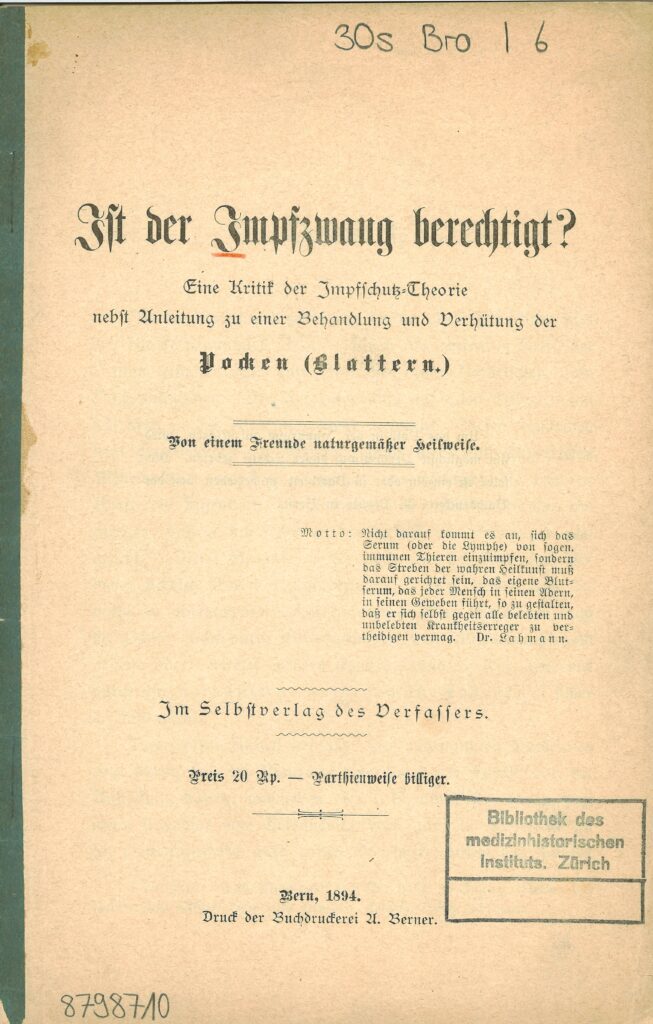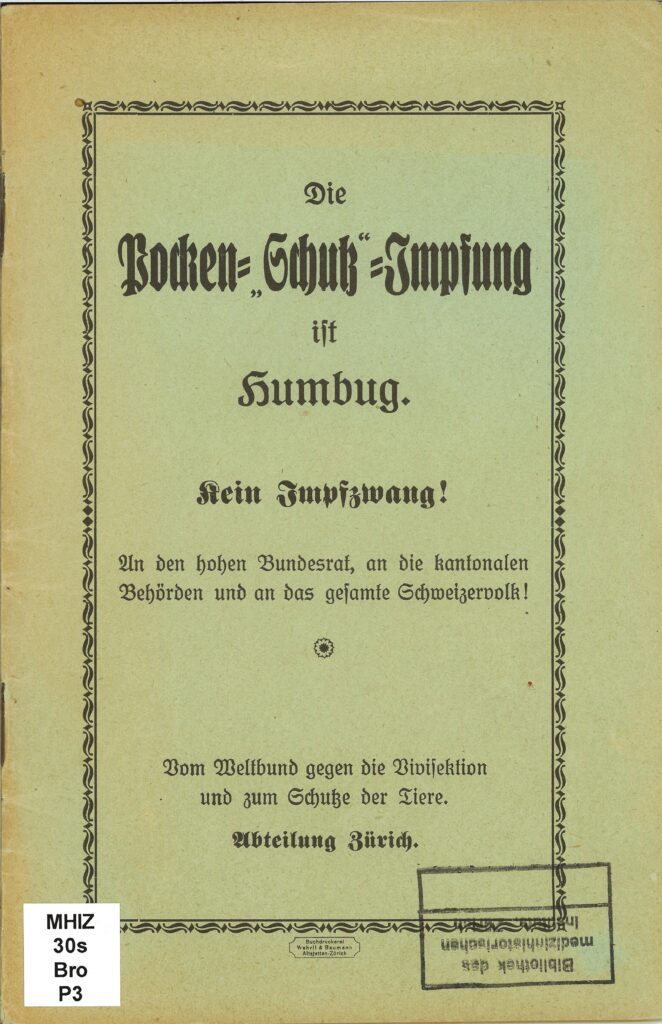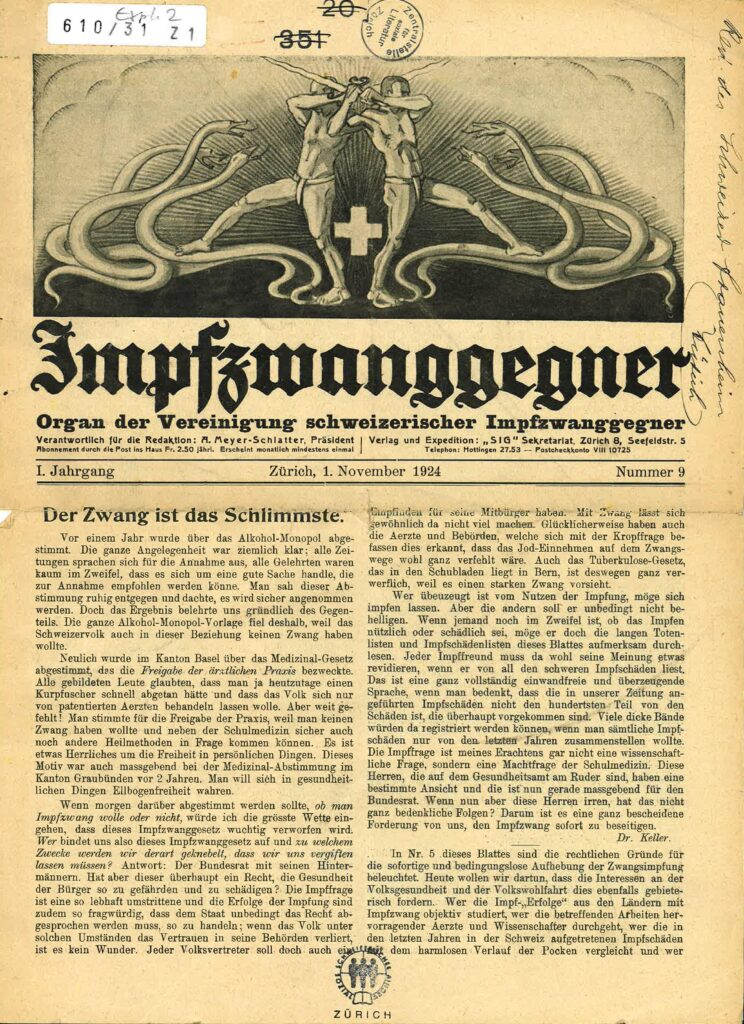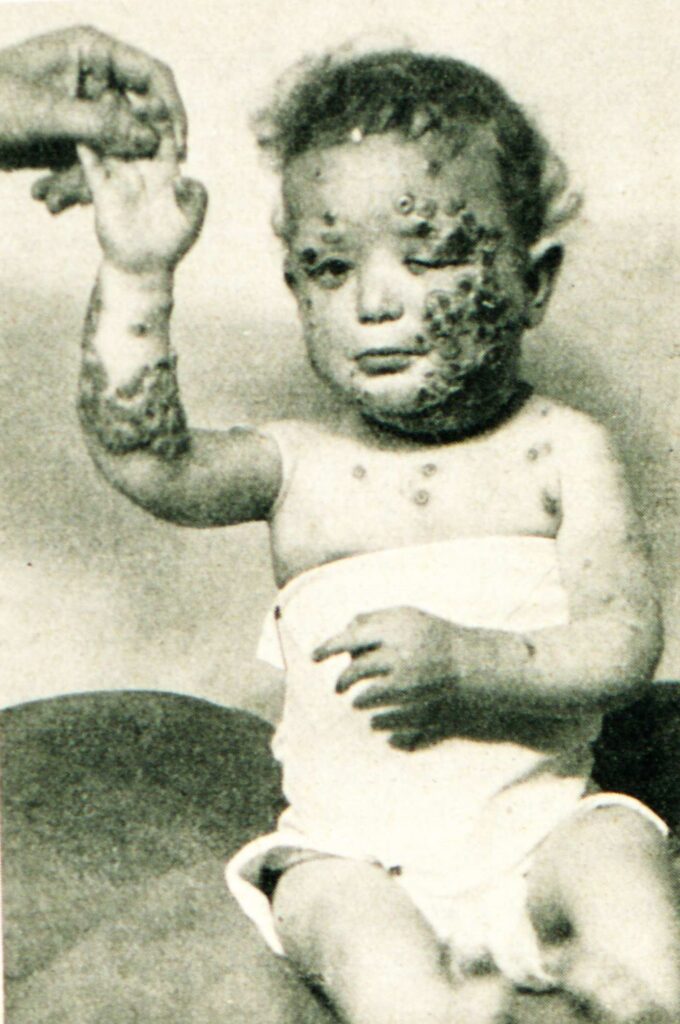This post is also available in:
 Deutsch
Deutsch
Vaccine hesitancy is as old as vaccination itself. The first time it became a poltical issue in Switzerland was the vote on a Federal Epidemics Act in 1882. After a heated referendum campaign, the act was overwhelmingly rejected by almost 80% of the electorate. What were the reasons for this and why did vaccination remain controversial despite the smallpox epidemic?
Catholic Conservative resistence
The Epidemics Act and thus compulsory smallpox vaccination were rejected particularly clearly in catholic Central and Eastern Switzerland as well as Valais. It is unclear what role religious concerns or reservations about academic medicine played in these rural cantons. For the Catholic Conservative Party, which together with the Association of Opponents of Compulsory Vaccination had taken the referendum, political motives were certainly just as decisive. Since its foundation after the Sonderbund War, the Federal Council had consisted exclusively of representatives of the Liberal Party. The Catholic Conservatives used every opportunity to influence their policies with referenda and to defend the self-determination of the cantons.

Friends of naturopathy
In Zurich and other urban regions, it was representatives of the emerging naturopathy movement who were particularly passionate opponents of compulsory vaccination. They rejected the vaccine as an unnatural «vaccine poison». Instead, they recommended «a sensible, natural way of life» with fresh air, exercise and healthy food «stimulating the inner power, the inherent power, the natural healing power of the organism, so that it restores itself and compensates for disturbances.» (1) In their understanding, smallpox was seen as a natural healing process of the organism, eliminating harmful substances through the skin – despite the high death rate and permanent impairments. Other anti-vaccinators generally distrusted medicine and accused doctors of wanting to profit economically from compulsory vaccination.

Compulsory vaccination only when facing an epidemic
When Switzerland was confronted with a major smallpox epidemic from 1921 onwards, the debate on compulsory vaccination resurfaced. Smallpox spread almost exclusively in the cantons that had abolished compulsory vaccination. People who had not been vaccinated or whose vaccination had not been refreshed for some time fell ill. In 1923, the Federal Council introduced compulsory vaccination by decree, but only when facing an epidemic, restricted to affected areas and population groups. This time, resistance came from the social democratic party, which called compulsory vaccination an encroachment on personal freedom, but was unable to prevail. A general compulsory vaccination still did not enjoy political majority.

Adverse side effects of vaccination
Time and again, reports appeared in the press about serious side effects and even deaths that were associated with smallpox vaccination. In 1881, the Bülacher-Wochenzeitung and the Zürcher Volksblatt reported that children in Riesbach had been infected with syphilis through smallpox vaccination. An investigation by the cantonal hospital confirmed several children with skin rashes in connection with the vaccination, but no syphilis. (2) However, such an infection would have been quite possible, because the arm-to-arm method had still been used. The Riesbach children had been vaccinated with the pus from the vaccine pustules of children previously vaccinated in Hirslanden. This risk was minimised when, shortly afterwards, animal vaccine produced on the skin of cattle in vaccination institutes was introduced.

In 1925, a case from Pruntrut caused a great stir, where a child died of meningitis who had been vaccinated shortly before. This very rare side effect of the smallpox vaccine is well documented today. At that time, the connection was still uncertain.
The Swiss Federal Office of Public Health reacted with a vaccination conference, attended by leading physicians of the time. Hermann Sahli, director of the Inselspital in Bern, took a self-critical tone: «In general, I do not doubt that vaccination damages occur, even if their existence was previously denied by doctors, perhaps somewhat carelessly. Like with many other therapeutic interventions of whose benefit we are convinced, unpleasant incidents can never be completely avoided.» (3) The attendants of the conference agreed that any questionable damages should be closely investigated, the teaching of vaccination techniques at universities improved and milder varieties of the smallpox vaccine be preferred.
Only the vaccination scar reminds us
In retrospect, the history of smallpox vaccination can be considered a success. To this day, smallpox is the only infectious disease that has been completely eradicated through vaccination. When the WHO officially declared the world free of smallpox in 1980, Switzerland also stopped its vaccination programmes. Today, only a circular scar on the upper arm of those born before 1980 reminds us of the vaccination with its long history.
Notes
(1) Ist der Impfzwang berechtigt? Eine Kritik der Impfschutz-Theorie nebst Anleitung zu einer Behandlung und Verhütung der Pocken (Blattern). Anonym. Bern, 1894. S. 3 (translated from German).
(2) Die angeblichen Impfschädigungen in Hirslanden und Riesbach. Beilage No. 25 der Blätter für Gesundheitspflege 10, 1881 (translated from German).
(3) Konferenz über Impffragen vom 10. Januar 1925 im eidgenössischen Gesundheitsamt in Bern. Beilage zum «Bulletin des eidgenössischen Gesundheitsamtes», 1925, Nr. 40, S. 4-5 (translated from German).
